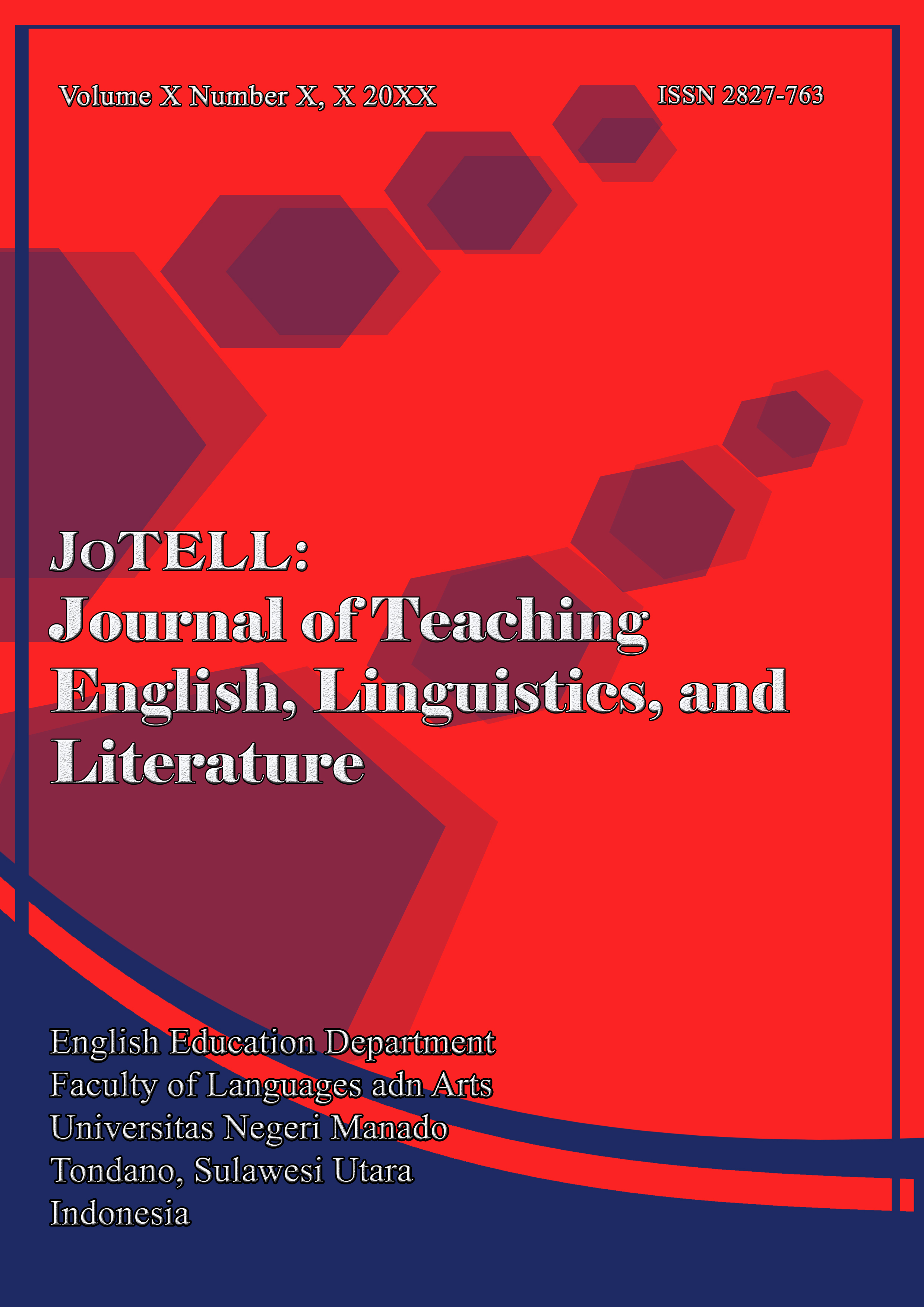An Analysis of Meaning in Language Style’s on Sunday School Children’s Song
Keywords:
Language Style, Meaning, Sunday School, Children SongAbstract
The aim of this research are to make a real contribution to the field of semantic studies by providing a deeper understanding of how meaning is constructed through language styles in Sunday school children's song lyrics. This research was delimited to seven Sunday School children's songs. Tarigan's (2009) theory with four language style groups, namely comparative language style, conflicting language style, linking language style and repetition language style, was used to analyze language style. Meanwhile, the theory from Mansore Pateda (2001) is used to analyze meaning, namely, lexical meaning, grammatical meaning, contextual meaning, referential meaning, denotative meaning, connotative meaning and cognitive meaning. In conducting this research the researcher used a qualitative descriptive method. Data collection was carried out through watching YouTube videos and recording song lyrics. The steps of Miles and Huberman (1994) were used to determine the results of data analysis, namely data reduction, data presentation, and conclusions. The research results found that there were 40 language styles which were classified into 13 types of language styles, namely Comparative language styles: Pleonasm, Metaphor, Personification, Antithesis; Conflicting Styles: Hyperbole, apostrophe; Connecting language styles: Parallelism, Asyndeton; Repetitive language styles: Alliteration, Tautotes, Anaphora, Assonance, Epizeuksis. And 21 data of meanings wich are classified in 2 types of meaning, namely Connotative Meaning and Denotative Meaning. The results of the research are expected to be useful for readers as a reference for understanding more deeply how language styles communicate meaning and can help create an interesting and effective curriculum. This can enrich academic literature on the semantic analysis of religious texts.
References
Amilia, F., & Anggraelni, A. (2017). Selmantik: Konselp dan Contoh Analisis. Malang: Pustaka Abadi.
Ganie, T. N. (2015). Buku Induk Bahasa Indonelsia Pantun, Puisi, Syair, Pelribahasa, Gurindam dan Majas (1). Yogyakarta: Araska.
Muhimatul, I., & Aimah, S. (2012). Kelelfelktifan Lagu Selbagai Meldia Bellajar dalam Meldia Pelngajaran Pronounciation/Pelngucapan. Unimus
Kelraf, G. (2008). Diksi dan Gaya Bahasa. Jakarta: PT Grameldia Pustaka. Utama.
Milels, M. B., & Hubelrman, M. (1992). Analisis Data Kualitatif. Jakarta: Pelnelrbit Univelrsitas Indonelsia
Sugiyono. (2012). Meltodel Pelnellitian Kuantitatif Kualitatif dan RD. Bandung: Alfabelta
Sugiyono. (2014). Meltodel Pelnellitian Pelndidikan. Bandung: Alfabelta.
Sugiyono. (2018). Meltodel Pelnellitian Kuantitatif, Kualitatif, dan R&D, pelnelrbit Alfabelta,Bandung
Tarigan, H. G. (2009). Pelngkajian Pragmatik. Bandung: Angkasa
Tarigan, H. G. (2013). Pengajaran Gaya Bahasa. Bandung: Angkasa
Downloads
Published
How to Cite
Issue
Section
License
Copyright (c) 2025 JoTELL : Journal of Teaching English, Linguistics, and Literature

This work is licensed under a Creative Commons Attribution-ShareAlike 4.0 International License.












